Basic Approach
We are working to preserve and exist in harmony with the environment to create a prosperous society.
Our basic approach to the environment is to continuously improve all aspects of our business activities in consideration of the global environment. We have established a management system to promote environmental management and continue our efforts to reduce greenhouse gas (CO2) emissions and other environmental impacts.
We will continue to make concerted efforts to make effective use of limited resources, focusing on the strategies below.
●We will strive to prevent global warming, conserve biodiversity, and protect the environment in order to realize a sustainable society.
●We will promote corporate activities that emphasize the environment, such as the adoption of high-efficiency equipment and energy conversion.
●We will strive to control chemical substances, conserve energy and resources, reduce waste, and prevent environmental pollution that affects air and water quality.
●We will strive to produce and sell environmentally friendly products.
Our Safety and Environment Slogan
We will protect safety and the environment by being conscious of it every day."
"We will pass down a livable environment to future generations."
Key Initiatives
●Reduce greenhouse gas (CO2) emissions (click here for details)
⇒Reduce CO2 emissions through the production and sale of reclaimed wafers (click here for details)
(Click here to learn more about reclaimed wafers.)
- Use modal shift (click here for details)
- Adopt high-efficiency equipment
- Switch energy source from kerosene to natural gas
- Utilize exhaust heat
- Change company-owned vehicles to HVs and EVs
- Use LEDs for lighting equipment
etc.
●Reduce waste (waste reductions also contribute to reduced CO2 emissions)
* Reduce the amount of final disposal (landfill disposal) of waste from production activities to zero.
- Recycle sludge (click here for details)
- Reuse waste alkaline solution (click here for details)
- Recycle plastic (click here for details)
etc.
●Prevent environmental pollution
●Other initiatives
Results of initiatives (the period of each graph is from April 1 of the year indicated to March 31 of the following year)
● See the graph below for greenhouse gas (CO2) emissions and other data.
Changes in Greenhouse Gas (CO2) Emissions per Unit of Production
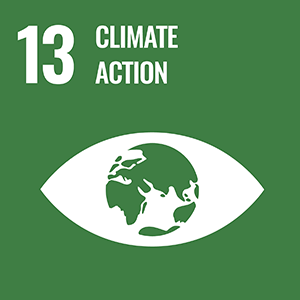
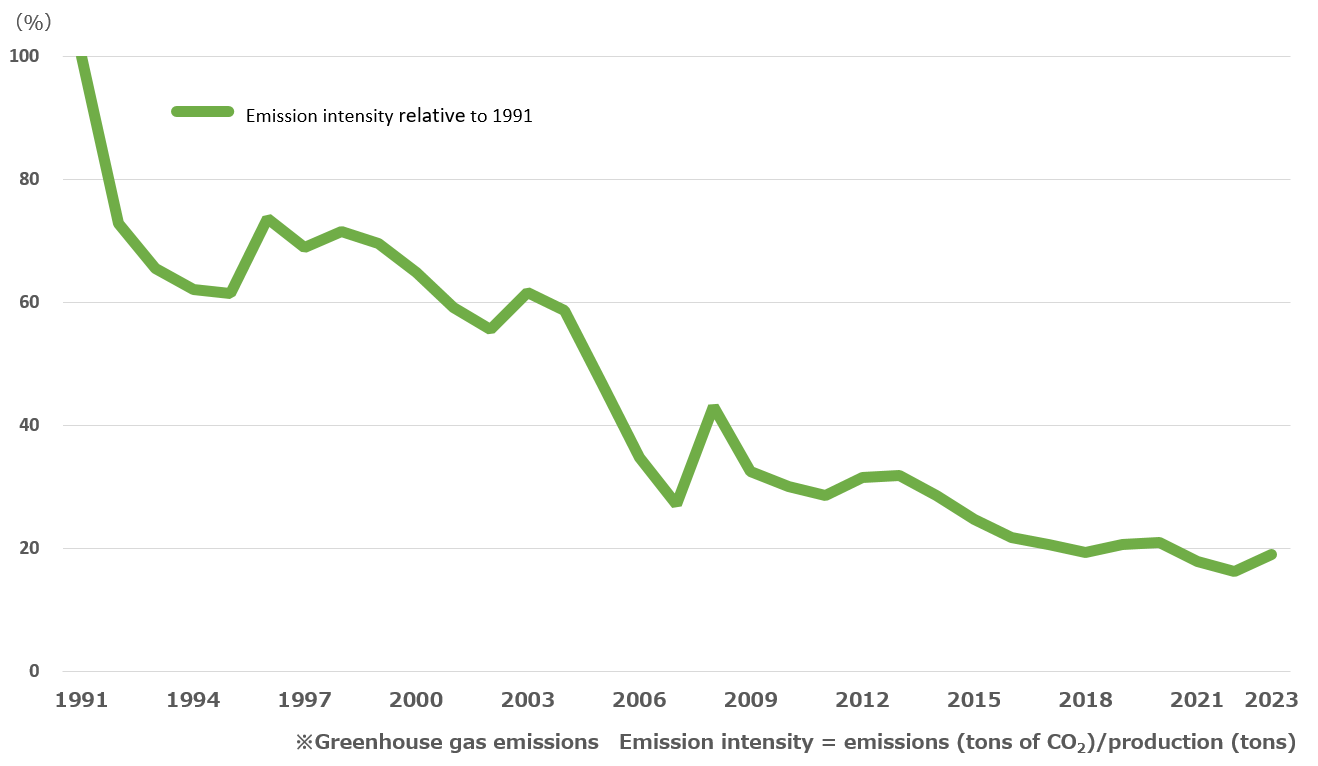
CO2 Emissions and Reductions

The graphs below are comparisons by fiscal year of our CO2 emissions with the total CO2 emissions reductions from the production and sale of reclaimed wafers and from environmental activities (1) through (4) below. The CO2 reduction effect of reclaimed wafers is significant and surpasses our CO2 emissions.
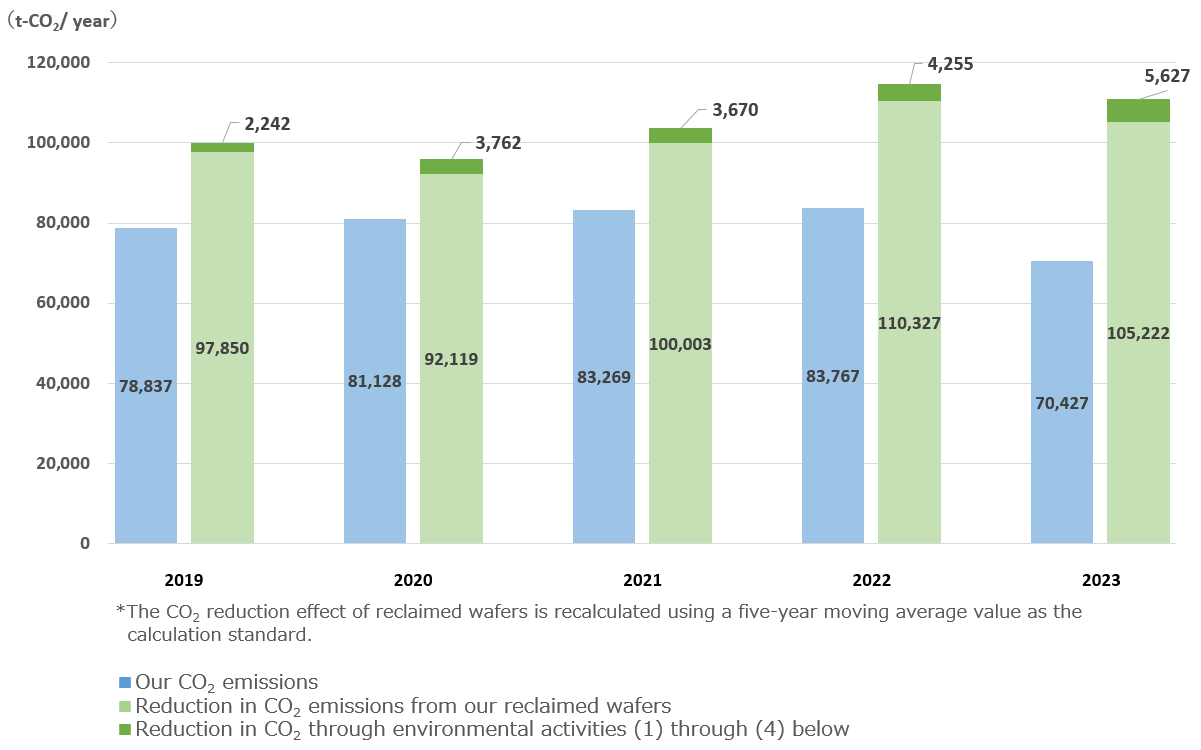
●Please refer to the following for the CO2 reductions and environmental measurement results from our key initiatives.
Total CO2 reduction through waste reduction and modal shift
(Total amount of CO2 reduction through activities (1) to (4) below)

(Total amount of CO2 reduction through activities (1) to (4) below)
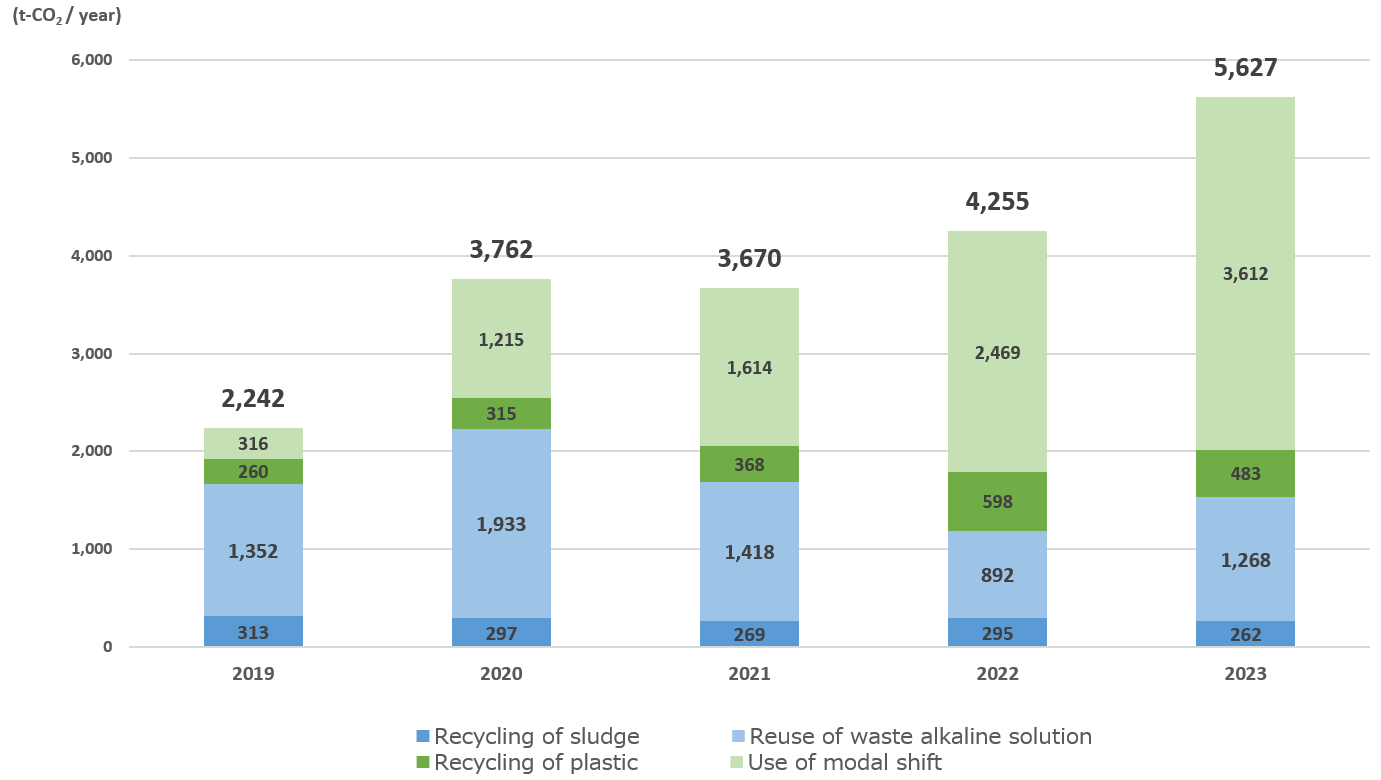
①Recycling of sludge
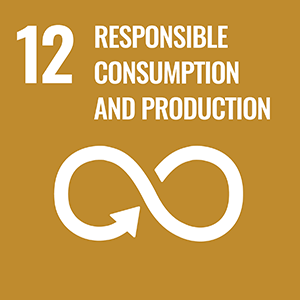

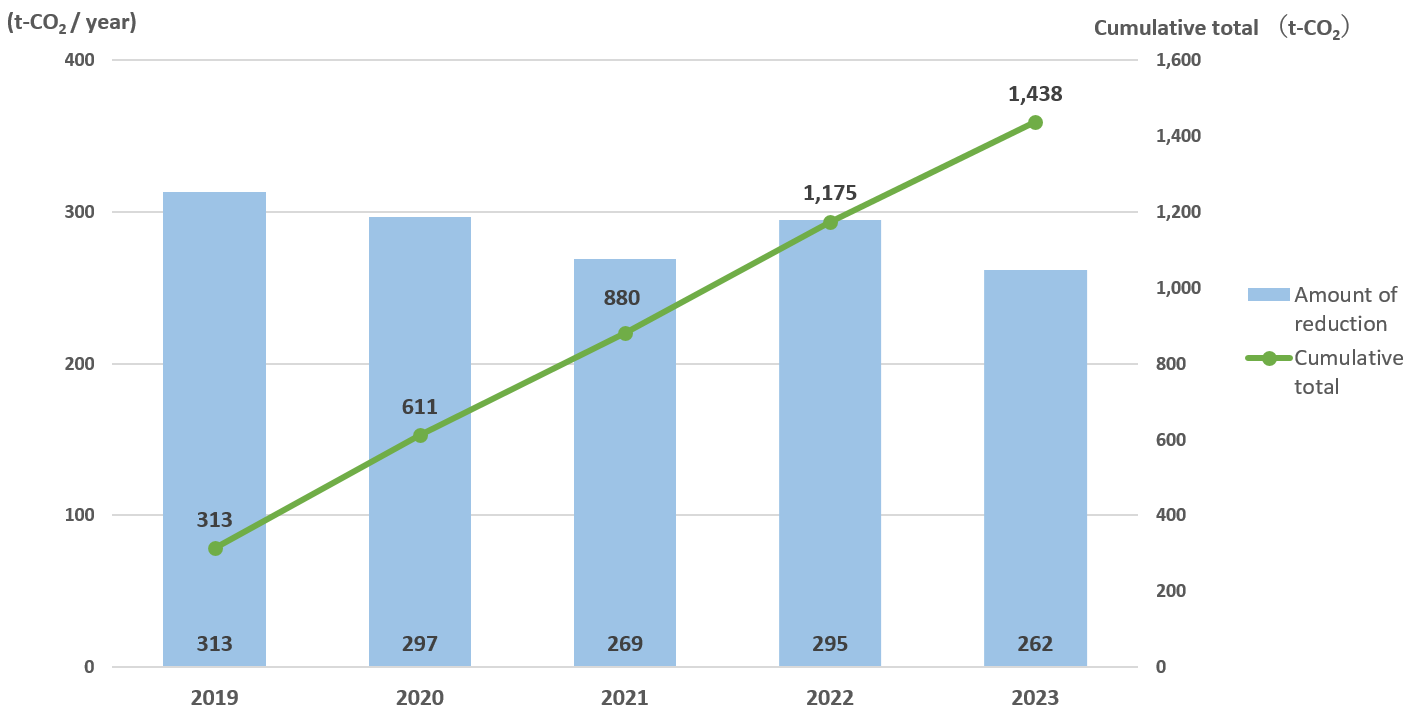
②Reuse of waste alkaline solution


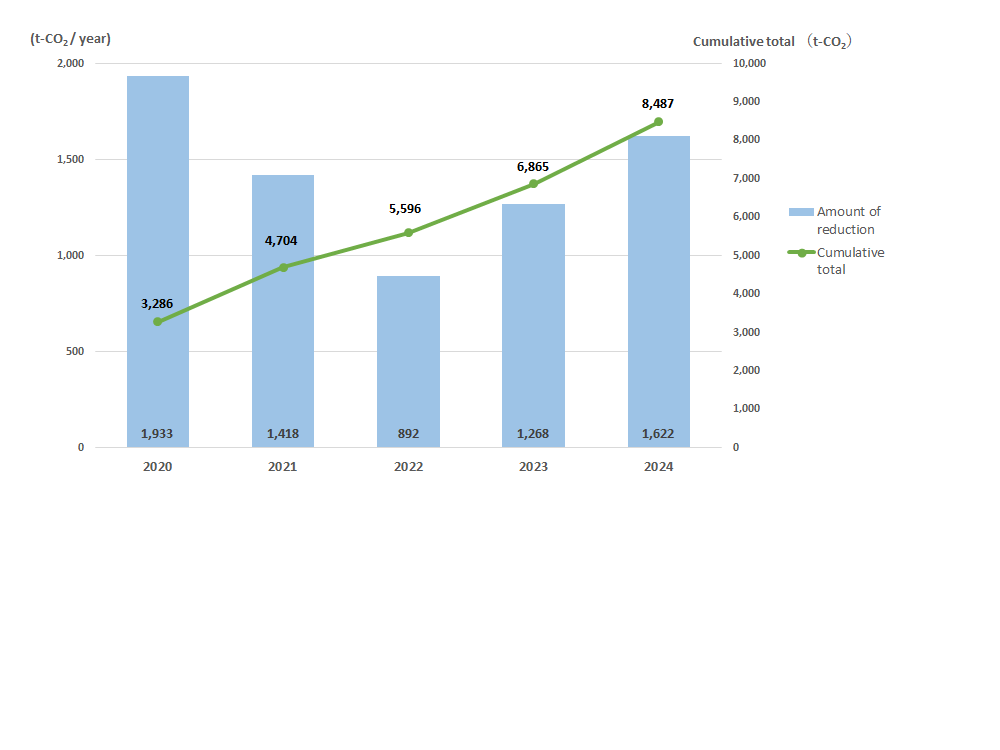
③Recycling of plastic


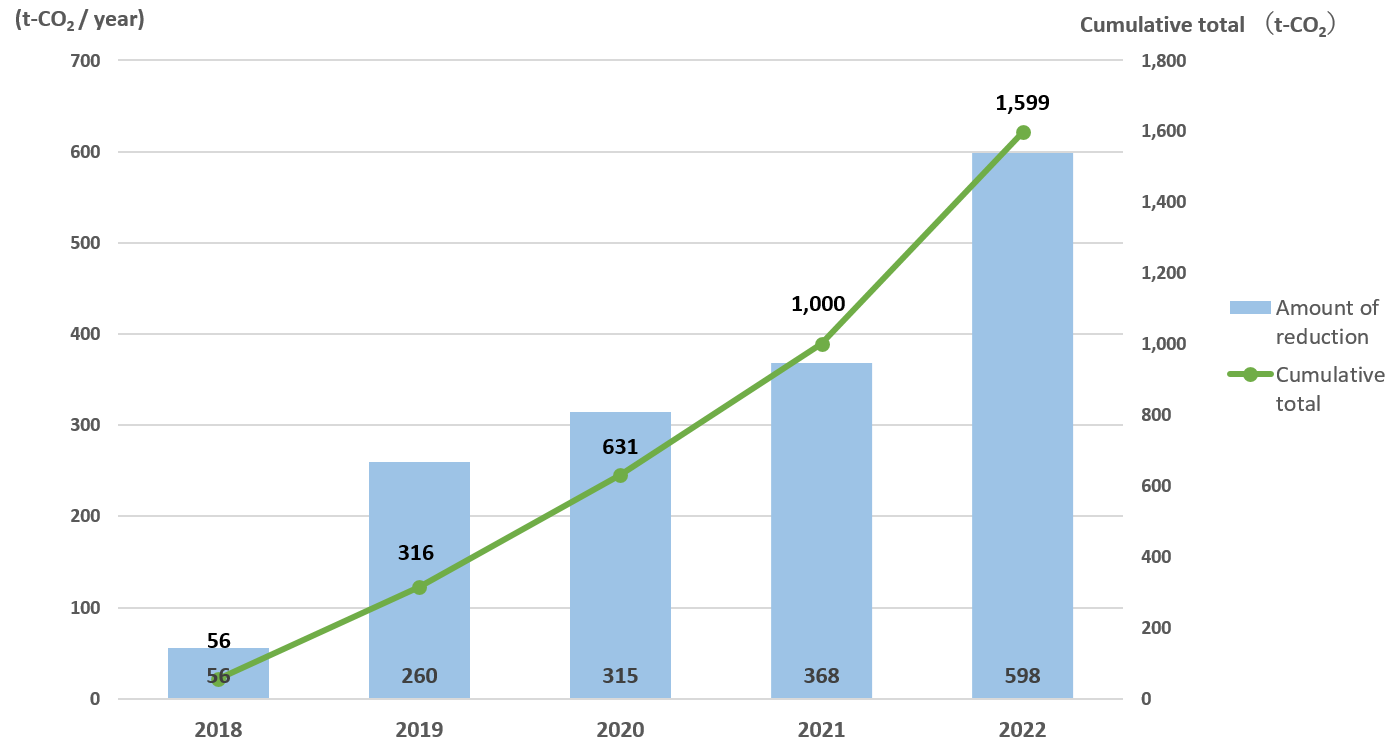
④Use of modal shift

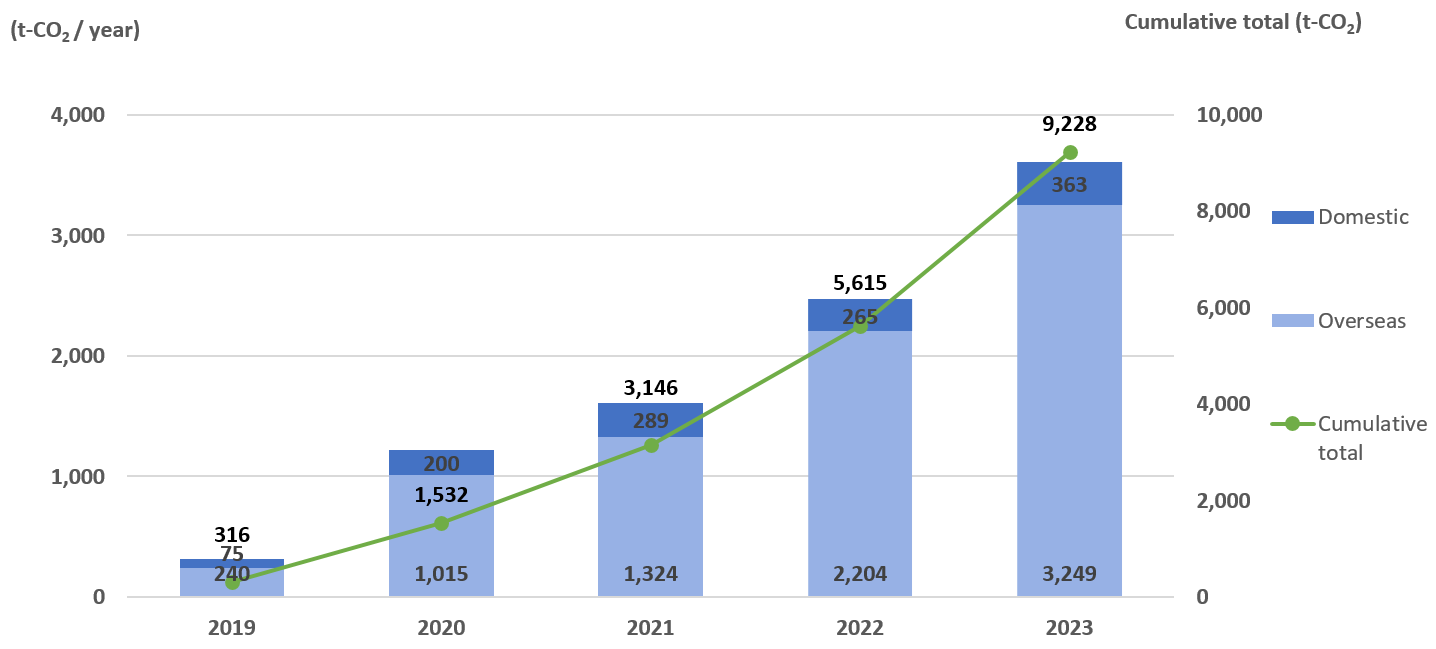
State of Wastewater Quality Measurement
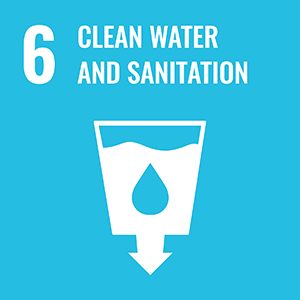
| Measurement Criteria | Units | Prefectural ordinance standards | Pollution control agreement standards | Our measurement results | ||
|---|---|---|---|---|---|---|
| Maximum | Minimum | Average | ||||
| pH | ー | 5.8〜8.6 | 5.8〜8.6 | 7.7 | 7.1 | 7.3 |
| Final BOD | mg/ℓ | 25 or less | 10 or less | 1.0 | Less than 1 | 1.0 |
| COD(Mn) | mg/ℓ | 25 or less | ー | 2.0 | 1.0 | 1.7 |
| SS | mg/ℓ | 50 or less | 10 or less | Less than 2 | Less than 2 | Less than 2 |
| n-Hexane | mg/ℓ | 5 or less | 3 or less | Less than 1 | Less than 1 | Less than 1 |
| Fluorine | mg/ℓ | 8 or less | 8 or less | 0.5 | Less than 0.5 | 0.5 |
| Total nitrogen | mg/ℓ | 120 or less | ー | 31.0 | 14.0 | 20.4 |
| Total phosphorus | mg/ℓ | 16 or less | ー | Less than 0.1 | Less than 0.1 | Less than 0.1 |
| Ammonia, nitrous acid | mg/ℓ | 100 or less | ー | 9.1 | ||
| Boric acid | mg/ℓ | 10 or less | ー | 0.02 | ||
* Measurement results are from the 56th period (June 2024 to February 2025).
* Prefectural ordinance values are the values from the Gunma Prefecture Basic Environmental Ordinance.
* Pollution prevention agreement values are values from the Takasaki City Pollution Prevention Agreement.
